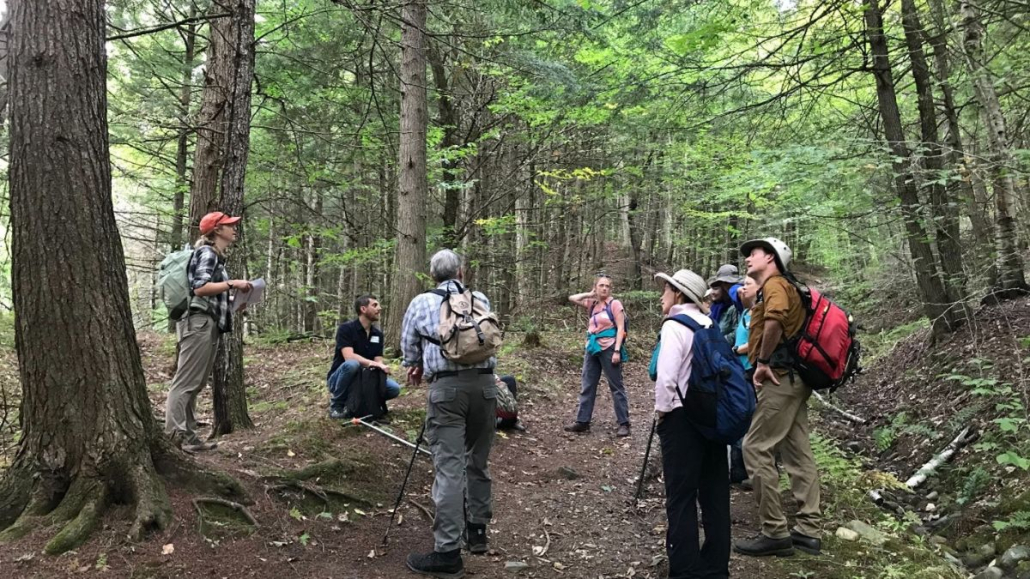In the (Outdoor) Classroom with NEWT’s Wildlands Ecologist

On Saturday, September 7, Northeast Wilderness Trust’s (NEWT) Wildlands Ecology Director Shelby Perry co-led a class on old forest ecology for students of North Branch Nature Center’s “Biodiversity University” program. Perry, joined by fellow ecologist Bob Zaino of the Vermont Fish and Wildlife Department, paired a classroom lecture with a dynamic, interactive walk-and-talk through Montpelier and East Montpelier’s North Branch Park. The class, titled “Old Forest Ecology: The Wonders & Mysteries of Our Ancient, Gnarled, & Majestic Old Woods,” provided students with a hands-on crash course in the ecological characteristics and benefits of old forests.
Perry and Zaino began the Saturday portion of the two-day class by helping students to wrap their heads around Vermont’s varied natural landscape. The state is home to anywhere between 24,000 to 43,500 species spread across 97 natural communities. The most common of these communities is Northern Hardwood Forest, which came to dominate what is now Vermont about 13,000 years ago upon the recession of the glaciers from the Northeast.
The rampant deforestation of the colonial era felled most of these sprawling old-growth forests. When agriculture shifted west in the eighteenth century, abandoned farm fields began to regrow. So while forest now covers more than 80 percent of New England, these woods are “middle-aged” on arboreal time-scales: between 90 and 120 or so years old. Old forest, which Perry defined in her presentation as “biologically mature forests with some characteristics of old-growth forests, exhibiting minimal evidence of human-caused disturbance,” persists on less than 1 percent of the state. These remaining old forests are characterized by elements like canopy gaps, a mix of old and young trees, an abundance of standing dead trees and downed wood, and above all, a state of “seeming disarray.”





